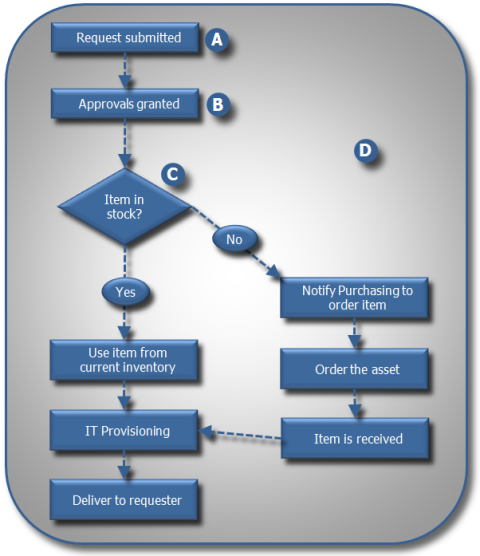
This section suggests how a request for a new asset might be automated. The scenario described below represents a model for how you could set up your request system, but you can configure yours differently to meet your own organization's needs. All request forms, reports, workflows, e-mail templates, and roles required to enable the functionality described below are included in Asset Lifecycle Manager's Asset Content pack.
To use a process similar to the one described in this section, you would need to have the necessary roles assigned and your system would need to include the assets, cost centers, user profiles, and other supporting resources that you will be specifying. (See Setting up a functional system and Synchronizing asset data for more information.)
The request process begins when a request is submitted. If the request is denied, a notification is returned to the requester and the process terminates. If approved, a series of actions are initiated, which enable intelligent automation, generate assignments and notification messages, facilitate compliance with standards and best practices, help to push the process through to completion, and record all activity in a detailed audit history.
The following diagram illustrates the basic flow of a typical asset request.


|
Request is submitted by a user with Requester rights. |

|
Request is sent to the appropriate manager for authorization before workflow proceeds. |

|
Repository is queried; the workflow’s next action and the path it follows depends on the response provided. |

|
Email notifications, manual tasks, and assignments are auto-generated based on responses to workflow actions. |
For an example of an automated request, see Sample asset request.